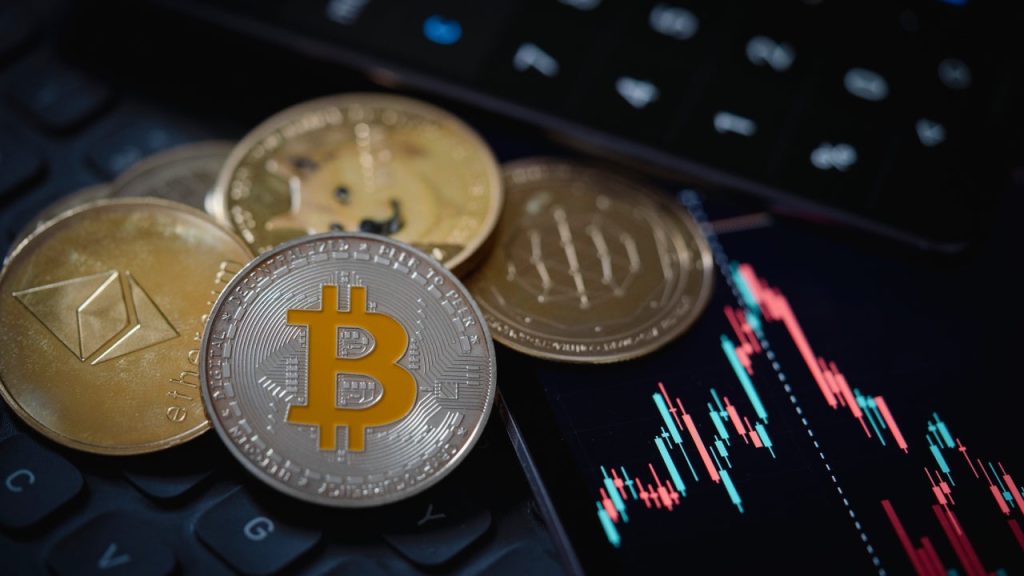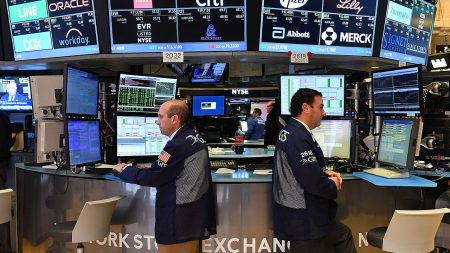Cryptocurrency is legendary for its volatility, and massive price swings can occur over a single trading day, making it especially attractive for day traders. This volatility can make day trading crypto highly profitable but also highly risky, if the market doesn’t swing your way. But day trading cryptocurrency is not as simple or cheap as the more advanced day-trading market for stocks, meaning traders need to know a few more things if they start trading these markets.
Here are key things to know before you start day trading cryptocurrency and why it can be even riskier than day trading stocks.
9 things to know when you day trade cryptocurrency
1. Crypto volatility can destroy your trading strategy
Volatility giveth, and volatility taketh away. Experienced traders like cryptocurrency because of volatility, because it gives them an opportunity to profit. What falls may bounce back later today, and what rises sharply may continue to soar. For example, Bitcoin plummeted 73 percent in 2018 and 64 percent in 2022, while it ran up some 302 percent in 2020 and 156 percent in 2023.
This level of volatility is an opportunity to profit for the sophisticated, but how exactly do traders profit? One way is by taking advantage of unsophisticated and nervous traders, who sell their positions when the volatility becomes too much. But the intense volatility can throw even advanced traders for a loop, so they still need to keep a tight control on their risk.
Part of the reason for cryptocurrency’s volatility is that it’s not backed by the hard assets or cash flow of an underlying business, as stocks are. This fact means cryptocurrency is driven only by sentiment, that an individual trader will be able to sell the coin to the next trader for more money.
With no fundamental backing, cryptocurrency can plummet until sentiment improves, though traders have no guarantee that it ever will, especially if traders suddenly forget about the coin.
2. Long-term crypto investing may work out better
Because of the intense volatility, would-be day traders might be better off if they simply take a buy-and-hold strategy with a given cryptocurrency. They’ll be able to ride the upward wave without trying to consider where they may need to jump off. While their crypto will still be subject to volatility, they won’t end up making the choice to sell and then the coin continues to soar.
Of course, not all cryptocurrency will continue to rise, so it’s vital to pick what look like the likely winners and then to diversify to help reduce risk. A lot of trading in cryptocurrency, such as in Bitcoin, is for this very reason. Bitcoin makes up more than half of the total market capitalization of cryptocurrency, according to CoinMarketCap, as traders focus on the most popular coins.
3. Commission-free crypto trading is rarely free
Unlike commissions on stock trades, which have plummeted to zero or very nearly zero, trades on crypto trades are rarely actually free. Binance.US, for example, offers free trading on Bitcoin and Ethereum. Meanwhile, brokers such as Robinhood and Webull offer commission-free trades, which is technically true, but only because they build a spread mark-up to the price.
With a spread mark-up, your buy price is higher than the market price, while your sale price is lower. That mark-up helps the broker make a profit yet advertise commission-free trading.
Unfortunately, many brokers such as Coinbase are less than upfront about the mark-up you’ll pay, and some take great pains to hide that mark-up from customers. In many cases, you could easily end up paying a 1 percent fee on each side of a trade, which may not sound like a lot, but it will add up quickly if you’re making a significant number of day trades each week. Every single trade will be clipped for 1 percent, whether you make a profit on it or not.
The best brokers for cryptocurrency may offer ways around these extra fees.
4. Don’t trade crypto with small amounts
If you’re trading with small amounts of cryptocurrency, you may be hit with higher fees, as a percentage of your capital. Trading apps such as PayPal and Venmo charge higher fees for those trading small amounts, and even just a few percent can really eat into your bankroll.
On the other hand, many crypto exchanges offer discounts if you’ve traded significant volume in the last 30 days, but low cost alone is not a reason to place a trade.
5. Watch out for maker-taker pricing on crypto trades
Individual traders who are used to the conveniently free trades at the best stock brokers may want to pay special attention to a wrinkle in the pricing structure at crypto exchanges. Crypto exchanges often have two different sets of prices – maker-taker pricing – that can offer different prices to clients based on their type of order.
- Those who “make” liquidity for the market and issue limit orders that don’t immediately fill are often charged lower “maker” fees.
- Those who “take” liquidity from the market and issue market orders that immediately fill are often charged higher “taker” fees.
In practice, the difference may be marginal, but for active day traders it may be important to cut incremental costs where they can, particularly when those costs are incurred over and over.
6. Find a crypto platform that supports active trading
You can buy and sell crypto at a variety of places – including the usually horrendously expensive Bitcoin ATM – but if you’re day trading, you need a place that makes active trading easy and with reasonable costs, of course. You can purchase cryptocurrency through financial apps PayPal and Venmo, for example, but they’re not really cut out for day trading.
So find a trading platform that works for you, whether it’s through a crypto exchange, which may offer hundreds of cryptocurrencies to trade, or through a traditional broker such as Interactive Brokers, which offers a limited selection of tokens but highly competitive pricing.
7. Crypto ETFs may be a better option
If you’re intent on trading and minimizing costs, then using exchange-traded funds (ETFs) is now a viable way to trade Bitcoin and Ethereum, the top two cryptos by market cap. ETFs offer a number of advantages over trading the cryptocurrencies directly:
- None of the hassle of dealing with sometimes-expensive pricing on crypto exchanges, since brokers allow you to buy ETFs with no transaction fees.
- Traditional brokers have a long track record of security and straight dealing, while crypto exchanges have had numerous instances of outright fraud and poor security.
- The best Bitcoin ETFs and best Ethereum ETFs charge relatively low management fees, meaning your all-in fees (transaction plus management fees) may be much less than working through a crypto exchange.
- The ETF’s managers get to handle the problem of securely storing and safeguarding the underlying crypto, taking this issue off your hands.
So if you’re looking to trade the largest cryptos, then using an ETF may make a lot of sense.
8. Profitable crypto trades are taxable
You may think your trades in cryptocurrency are not taxable because your ownership is semi-anonymous. That argument won’t fly with the IRS, and profitable trades are liable for capital gains taxes, which are assessed at normally higher ordinary tax rates for short-term trades.
Brokers and exchanges are supposed to report your gains and losses on a Form 1099, but they may not do so. You’ll still owe taxes on your gains, however. Just like stocks, you’ll be able to offset your winning trades with losing trades, meaning it could make sense at year-end to sell your losers and reduce your tax burden through a process known as tax-loss harvesting.
This guide to cryptocurrency taxes runs through the most important aspects of taxation here.
9. Crypto is not subject to wash sale rules (yet)
Crypto traders are not subject to the same rules on wash sales that investors in other assets are, at least for now. Typically, the IRS disallows any capital loss for transactions where the trader has repurchased the asset within 30 days before or after the sale. The loss can’t be claimed on taxes until the trader stays out of the asset for a full 30 days.
But for cryptocurrency, the IRS still allows traders to claim these losses. Traders can literally realize a loss and then turn around and buy the cryptocurrency again and still be able to claim the loss on taxes. This strategy can work well at the end of a profitable year if you have some losing trades that you want to clear out, even if you suspect the price may rise in the future. Sell and then repurchase the coin while claiming your tax loss and still getting to ride the coin higher.
Congress and the IRS are looking at changing the wash-sale rule to include cryptocurrency, so it may not be around much longer.
Bottom line
The volatility in crypto markers can make it tough to stay in the game, but that’s just one of the many things crypto day-traders should focus on. Would-be crypto day traders should pay careful attention to costs, since repeated transactions can slowly but surely erode your capital.
Read the full article here












